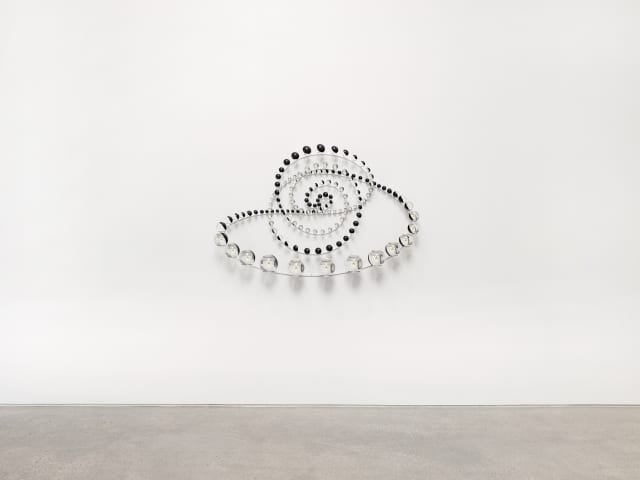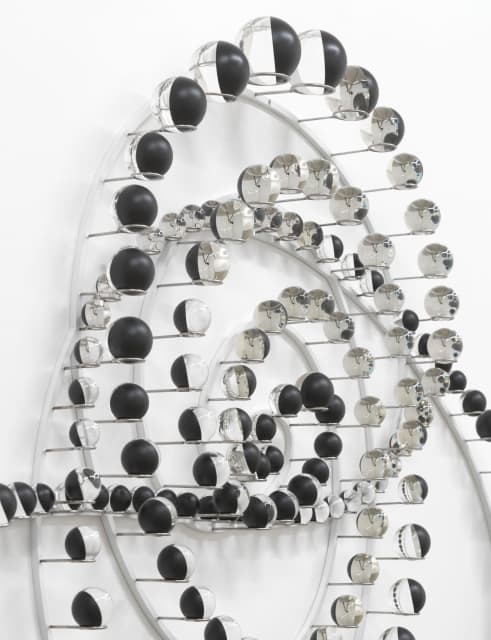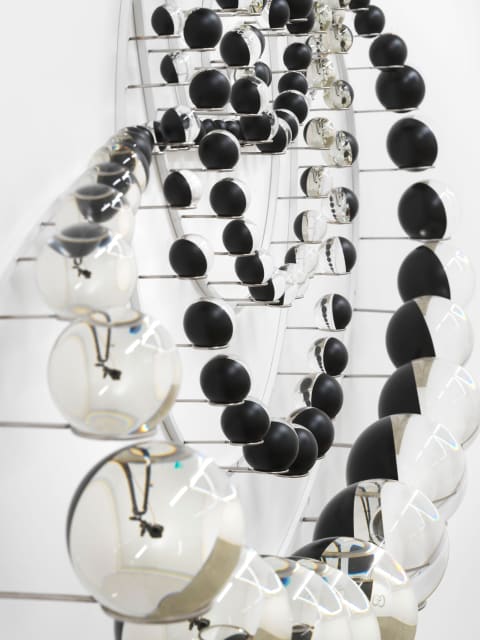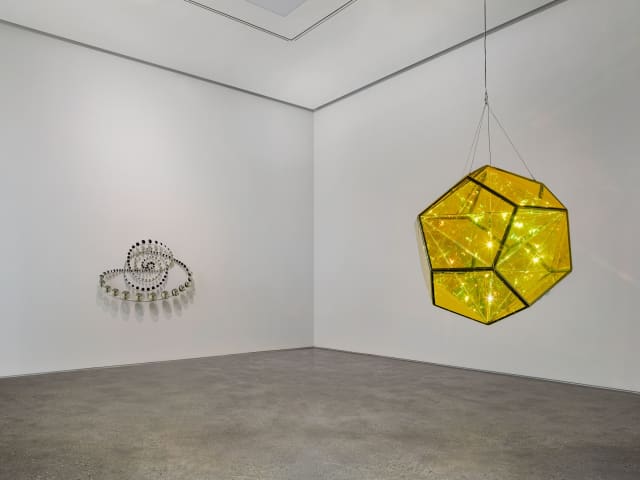Orbital close encounter evolved from a series of sculptures that Eliasson produced in 2019, titled Human time is movement. The sculptures, spiralling spheres formed by pipes curving back in around themselves, are variations on a mathematical figure known as the Clelia curve. Named after the countess Clelia Grillo Borromeo by the early-eighteenth-century Italian mathematician Guido Grandi, the curve traces the progress of a point as it moves simultaneously along a sphere’s meridian and rotates at a constant speed around its axis. The resulting curve corresponds to the way one peels an orange or winds up a ball of wool. The strikingly different forms seen in Eliasson’s works, on the other hand, are produced by adjusting the speeds of rotation and by contracting the curve in towards the centre as the point travels.
The wall works show the Clelia spheres projected onto a flat surface as they would appear in projective geometry – the mathematical discipline, originating from the study of one-point perspective, concerned with forms as they appear on a plane. Glass spheres of various sizes trace the contours of the curves. One half of each sphere has been given a mirror finish that is coated on the outside with black paint. To create an illusion of depth, the spheres are turned as they progress along the curves, so that the mirror surface is visible on the inside of the largest spheres while the black-coated portions of the smaller ones face outwards. As the viewers’ eyes trace the curves, they encounter numerous, upside-down reflections of themselves, the surrounding space, and the other spheres.
| Artwork details | |
Title |
Orbital close encounter |
Year |
2022 |
Materials |
Partially silvered glass spheres, stainless steel, paint (black, white) |





